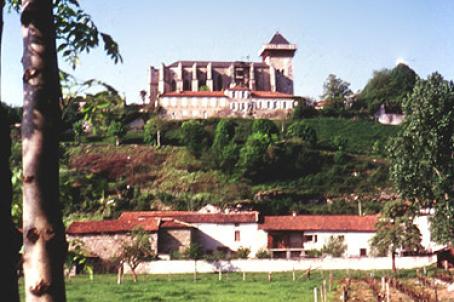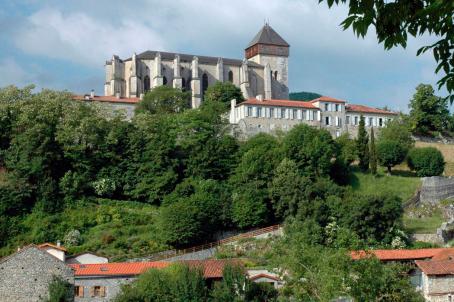Saint-Bertrand-de-Comminges Cathedral

Notre-Dame de Saint-Bertrand-de-Comminges Cathedral was the cathedral of the diocese of Comminges until 1801, when Pope Pius VII issued the bull Qui Christi Domini dividing the territory of the diocese of Comminges between the archdiocese of Toulouse and the diocese of Bayonne. The cathedral is located on the acropolis of a Celtic oppidum which gave birth to the Roman city of Lugdunum Convenarum, whose ruins stretch across the plain. The invasion of the Vandals in 409 devastated it. The city disappeared in 585 following a conflict between Gondovald, claiming to be the natural son of Clotaire I and King Gontran. It was not until Bertrand de l'Isle, a member of a noble family and canon of Toulouse, appointed bishop of Comminges in 10832, that the city recovered. He re-established community life in the chapter, raised the cathedral and built its cloister. He died in 1123. Recognised as a saint by the crowd of pilgrims at the tomb of Saint Bertrand, he was only recognised as a saint under the pontificate of Clement V. The influx of pilgrims necessitated the enlargement of the cathedral in the second half of the 18th century. The bell tower was built in the 12th century inside the nave.
About this building
Bertrand de Got, bishop of Comminges from 1295 to 1299, decided to partially rebuild the cathedral. The reconstruction took place from 1304 to about 1352, and started with the lower parts of the choir and its radiating chapels around the former apses. The three-aisled nave gave way to a new nave, unique and much higher than the previous one, with a ribbed vault, which leans against the bell tower to the west. The reconstruction was carried out in a regular manner from east to west, and the rhythm of the work is documented in particular by the decoration of the keystones. The apse and the choir bay were built quickly: their keystones are painted with the coat of arms of Scott de Linières (accompanied by the coat of arms of Bertrand de Got). The keystones of the third and fourth bays of the nave do not give us any other element of dating for this work: the first door of the arms attributed to Saint Bertrand, when the second was repainted with the arms of Jean de Mauléon, bishop from 1523 to 1551.





